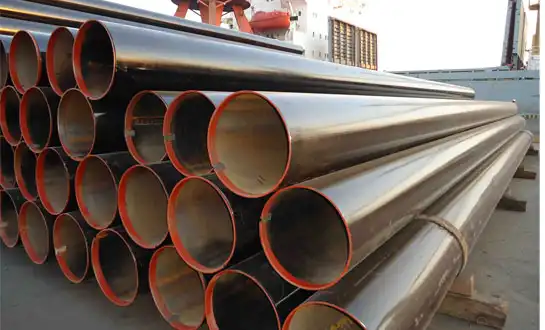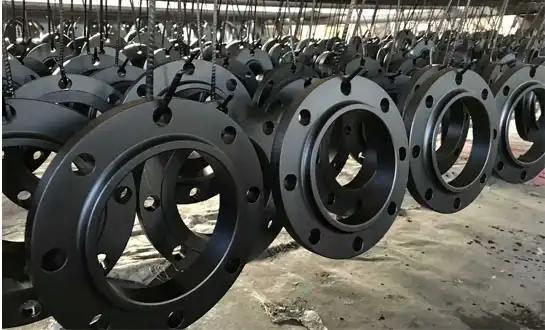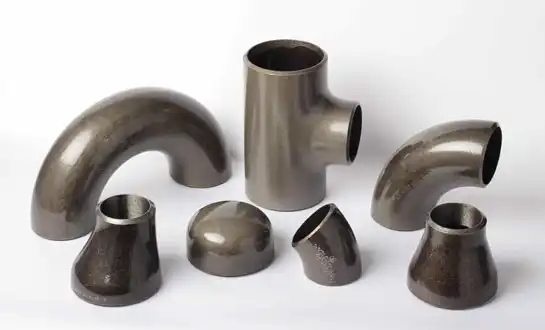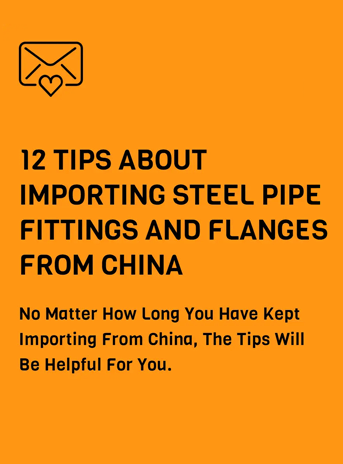Buyer’s Guide: Choosing Industrial Pipe Components for Marine Projects
In maritime environments, industrial infrastructure encounters unique challenges. Selecting pipe components that can withstand corrosive saltwater, harsh weather conditions, and frequent pressure variations requires careful consideration. For marine projects, selecting the appropriate industrial pipe components requires a deep understanding of material qualities, environmental considerations, and operating requirements. The material in this book helps project managers, marine engineers, and procurement staff use marine piping systems efficiently. Regardless of your workplace—offshore platforms, shipbuilding projects, or coastal industrial facilities—the safety performance, lifespan, and overall success of the project will be directly impacted by the pipe fittings, flanges, and connectors you choose.
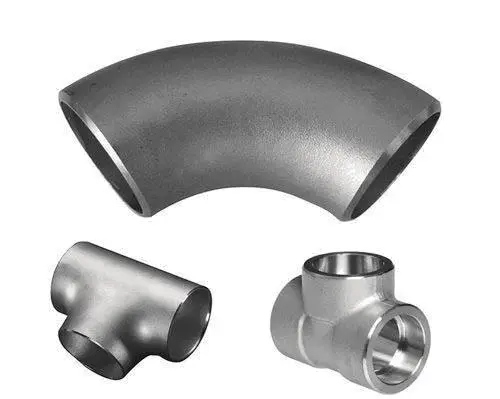
Understanding Material Requirements for Marine Environments
Corrosion Resistance Standards in Saltwater Applications
The harsh corrosive effects of saltwater exposure necessitate the use of industrial pipe components designed especially for marine projects. When properly treated with protective coatings or mixed with alloys that don't rust, carbon steel parts last a very long time in marine settings. The process of choosing must take into account the amount of chloride ions, the temperature of the water, and the amount of air that speeds up corrosion. To make parts last longer, good makers use advanced surface treatments like epoxy coatings, galvanization, and cathodic protection systems. When figuring out the thickness of a material, corrosion allowances must be taken into account. These can be anywhere from 3mm to 6mm, based on the severity of the exposure and the expected service life. When choosing industrial pipe components for subsea uses versus splash zone installations, it is important to understand the difference between general corrosion and localized pitting.
Temperature and Pressure Specifications for Offshore Operations
Offshore marine installations experience dramatic temperature fluctuations and pressure variations that significantly impact industrial pipe components performance. Components must maintain structural integrity across temperature ranges from subfreezing conditions to elevated temperatures in process systems. Pressure ratings become particularly critical in deepwater applications where hydrostatic pressure increases approximately one atmosphere per ten meters of depth. Buttweld steel elbows and reducers must accommodate thermal expansion and contraction without developing stress fractures or connection failures. Dynamic pressure surges from wave action, pump operations, and emergency shutdowns require components with adequate pressure safety margins. Quality industrial pipe components incorporate design factors that address fatigue loading from constant motion and vibration inherent in marine structures.
Compliance with International Marine Standards
Navigating the complex regulatory landscape requires industrial pipe components that meet multiple international standards governing marine construction and safety. Classification societies including Lloyd's Register, DNV-GL, and the American Bureau of Shipping establish rigorous testing protocols for marine piping systems. Components must satisfy requirements from ASME B31.3 for process piping, while also meeting marine-specific standards. Export-oriented projects require verification through GOST-R certification for Russian markets and CE marking for European installations. Material traceability documentation becomes essential, with each component requiring mill test certificates that verify chemical composition, mechanical properties, and heat treatment procedures. Third-party inspection services like SGS provide independent verification that industrial pipe components meet specified standards before shipment to project sites.
Evaluating Component Types and Configuration Options
Selecting Appropriate Fittings for Complex Marine Layouts
Marine piping systems require diverse industrial pipe components to accommodate complex routing through confined spaces within vessels and offshore platforms. Buttweld fittings including elbows in various angles, tees for branch connections, and reducers for diameter transitions provide flexibility in system design. The choice between long radius and short radius elbows affects flow characteristics and pressure drop calculations critical for system efficiency. Marine applications often demand custom fabrication of special fittings to navigate around structural members and machinery foundations. Quality industrial pipe components manufacturers maintain extensive inventories of standard sizes while offering fabrication capabilities for non-standard configurations. Weight considerations become paramount in marine projects where every kilogram affects vessel stability and offshore platform load calculations.
Flange Selection for Reliable Connection Points
Flanges represent critical connection points in marine piping systems, requiring careful specification of industrial pipe components that ensure leak-free operation under dynamic conditions. Raised face, flat face, and ring-type joint flanges each offer distinct advantages depending on pressure class, fluid service, and accessibility for maintenance. Material grades must match pipe specifications while providing adequate strength for bolt loading and gasket compression. Specification of proper flange classes according to ASME B16.5 or B16.47 ensures compatibility and adequate pressure ratings for intended service conditions. Corrosion-resistant bolting materials including stainless steel or coated carbon steel fasteners prevent connection degradation over time.
Specialized Components for Vibration and Movement Compensation
Marine environments subject piping systems to constant motion from waves, vessel operation, and machinery vibration, necessitating specialized industrial pipe components for movement accommodation. Expansion joints and flexible connectors absorb thermal growth, mechanical vibration, and structural displacement without transferring excessive loads to connected equipment. Pipe supports and anchors must be carefully positioned to control system movement while preventing overstress of components and equipment nozzles. Quality manufacturers provide comprehensive technical support for movement analysis, helping buyers specify appropriate industrial pipe components for dynamic marine applications.
Quality Assurance and Supplier Evaluation Criteria
Certification and Testing Documentation Requirements
Purchasing dependable industrial pipe components for marine applications necessitates thorough quality control via extensive certification and testing records. For every production batch, mill test certificates offer crucial information such as heat treatment verification, mechanical property testing findings, and chemical composition analysis. Reports from non-destructive testing attest to the lack of surface irregularities and interior flaws. By confirming that components match designated material grades, positive material identification testing helps to avoid expensive material mix-ups. Certificates of hydrostatic testing verify pressure integrity at test pressures higher than those specified in the design. Early in the procurement process, buyers should set precise documentation criteria to make sure that the vendors they choose can fully trace all industrial pipe components that are provided to marine projects.
Supplier Capability Assessment and Quality Management Systems
A detailed evaluation of production capabilities, quality management systems, and marine application history are necessary when assessing possible suppliers of industrial pipe components. A dedication to quality management concepts, such as process control and continuous improvement, is demonstrated by ISO 9001:2015 accreditation. Production capacity, equipment sophistication, and labor competency are revealed by facility audits, which are crucial for fulfilling the exacting requirements of marine projects. Suppliers who have received approval from the Marine Classification Society have demonstrated their capacity to meet the exacting standards needed for offshore construction and shipbuilding. Beyond merely providing a product, technical support services like engineering help, advice on material selection, and installation suggestions provide value.
Logistics and Delivery Considerations for Marine Projects
In order to ensure timely delivery, suppliers of industrial pipe components must carefully coordinate with marine project locations, which frequently present unique logistical obstacles. Precise timing is necessary for offshore installations in order to align with weather windows and vessel availability. To avoid delays in clearing, export documentation, such as business invoices, certificates of origin, and customs declarations, must be correct and comprehensive. Experienced international shipping providers handle the complexities of port handling and export laws. For marine projects, choosing vendors with demonstrated logistical skills lowers risk and increases project success overall.
Conclusion
Material qualities, supplier capabilities, regulatory compliance, and logistical considerations must all be balanced when choosing industrial pipe components supplier for marine projects. A careful assessment of corrosion resistance needs and collaboration with reputable manufacturers who are aware of marine applications are essential for success.
HEBEI RAYOUNG PIPELINE: Your Trusted Industrial Pipe Components Manufacturer
For your maritime project, are you prepared to find high-quality industrial pipe components? Your project needs quality, certification, and technical assistance, and HEBEI RAYOUNG PIPELINE TECHNOLOGY CO., LTD. provides it. Secure connection points are ensured by our variety of industrial pipe fittings, which include buttweld carbon steel elbows, tees, reducers, and pipe flanges. All design needs, from straight lines to complicated angles to flexible joints, are met by the products in our assortment. Being a trustworthy supplier of carbon steel pipes to both local and international markets, our export compliance and quality standards are validated by our GOST-R and SGS certifications. Contact our technical team today at info@hb-steel.com to discuss your specific project requirements and discover how our industrial pipe components can enhance your marine infrastructure's performance and longevity.
References
1. Smith, J.R. & Anderson, M.K. (2023). Marine Piping Systems: Design and Material Selection for Corrosive Environments. Maritime Engineering Publications, Third Edition.
2. International Maritime Organization. (2024). Guidelines for Pipe Systems in Ships and Offshore Structures. IMO Technical Standards Committee Report.
3. Chen, L., Roberts, P.T. & Williams, D.A. (2023). Corrosion Prevention in Marine Industrial Applications. Journal of Marine Engineering Technology, Volume 18, Issue 4, pp. 245-267.
4. American Society of Mechanical Engineers. (2024). ASME B31.3 Process Piping: Marine and Offshore Applications Guide. ASME Press Standards Handbook.
5. Thompson, R.E. & Davidson, S.J. (2023). Procurement Strategies for Offshore Construction Projects. Offshore Engineering Quarterly, Volume 31, Number 2, pp. 112-134.
6. Norwegian Petroleum Directorate. (2024). Technical Requirements for Piping Components in Offshore Oil and Gas Installations. NPD Regulatory Framework Document Series.

Need a quote? Want to see samples? Just say hello. We’re friendly. We’re fast. And we’re ready when you are.
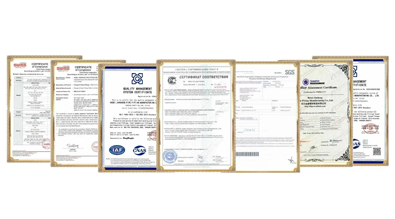
Welcome to RAYOUNG – Strong Pipes, Stronger Promise
